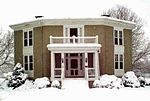Battle of Port Republic
1862 in Virginia1862 in the American Civil WarBattles of the American Civil War in VirginiaBattles of the Eastern Theater of the American Civil WarConfederate victories of the American Civil War ... and 3 more
Jackson's Valley campaignJune 1862 eventsRockingham County, Virginia
The Battle of Port Republic was fought on June 9, 1862, in Rockingham County, Virginia, as part of Confederate Army Maj. Gen. Thomas J. "Stonewall" Jackson's campaign through the Shenandoah Valley during the American Civil War. Port Republic was a fierce contest between two equally determined foes and was the most costly battle fought by Jackson's Army of the Valley during its campaign. Together, the battles of Cross Keys (fought the previous day) and Port Republic were the decisive victories in Jackson's Valley Campaign, forcing the Union armies to retreat and leaving Jackson free to reinforce Gen. Robert E. Lee for the Seven Days Battles outside Richmond, Virginia.
Excerpt from the Wikipedia article Battle of Port Republic (License: CC BY-SA 3.0, Authors).Battle of Port Republic
Harper Mill Road,
Geographical coordinates (GPS) Address Nearby Places Show on map
Geographical coordinates (GPS)
| Latitude | Longitude |
|---|---|
| N 38.3002 ° | E -78.7933 ° |
Address
Harper Mill Road
Harper Mill Road
24471
Virginia, United States
Open on Google Maps








